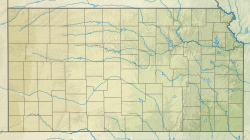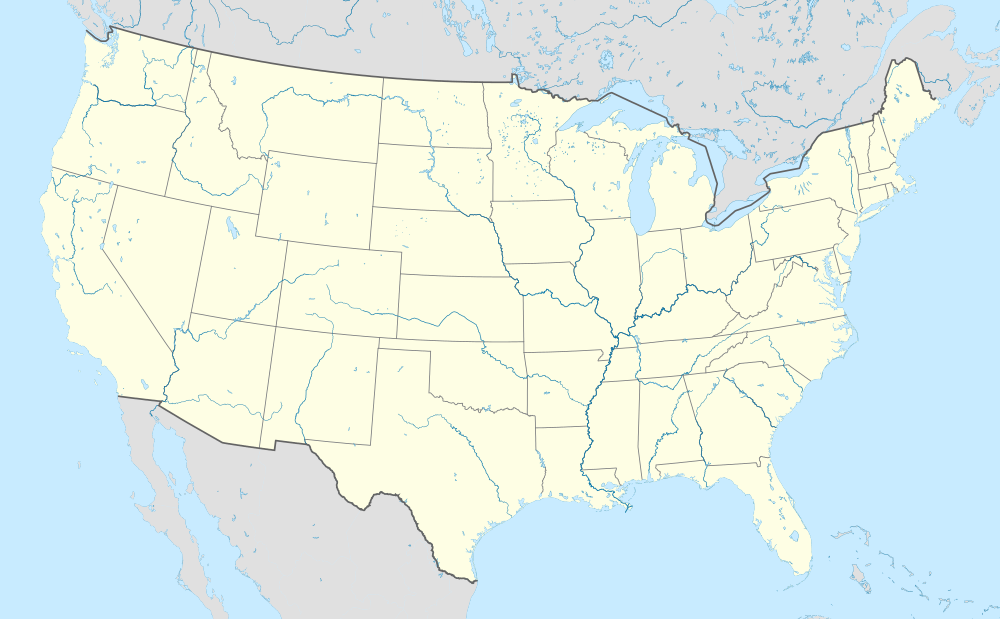Top Qs
Timeline
Chat
Perspective
Garden City Regional Airport
Airport in Pierceville Township, Finney County From Wikipedia, the free encyclopedia
Remove ads
Garden City Regional Airport (IATA: GCK, ICAO: KGCK, FAA LID: GCK) is nine miles southeast of Garden City, in Finney County, Kansas, United States.[1] It sees one scheduled airline, subsidized by the federal government's Essential Air Service program at a cost of $5,897,640 (per year).[2]
Remove ads

The National Plan of Integrated Airport Systems for 2021–2025 categorized it as a primary commercial service airport.
Remove ads
History
Summarize
Perspective
During World War II the United States Army Air Forces used Garden City Airport as a training airfield by the Army Air Forces Flying Training Command, Gulf Coast Training Center. The facility was called Garden City Army Airfield.
The main Garden City Army Airfield and its auxiliaries closed in November 1945 and were declared excess by the military on 18 May 1947. Civil authorities developed the main airfield into Garden City Regional Airport.
Garden City Regional Airport's status as former Garden City AAF made it important during the terrorist attacks of September 11, 2001. When orders were dispatched to ground all domestic flights, three large jets were told to land at GCRA, the closest airport large enough for them. The airport had no stairs for large airliners and the passengers had to be evacuated by Garden City Fire Department ladder trucks.[3]
In December 2011 the EAS program awarded American Eagle Airlines two daily non-stop flights to Dallas-Fort Worth. Flights began on April 3, 2012 with 44-seat and 50-seat Embraer ERJ family regional jets. American Eagle service was upgraded on November 30, 2022 with 65-seat Bombardier CRJ700 series regional jets operated by SkyWest Airlines. On February 15, 2024, the American Eagle service began operating with 65-seat Embraer 170 regional jets operated by Envoy Air.[4]
On June 26, 2024 a new terminal building was opened replacing the former facility built in 1959. The new terminal has greatly expanded space and a passenger loading bridge to accommodate the current 65-seat jet aircraft now serving the airport.
Remove ads
Historical airline service
Summarize
Perspective
Continental Airlines began serving Garden City in 1939 as a stop on a route between Denver, Colorado and Wichita, Kansas. Service was first operated through and old municipal airport three miles east of Garden City until 1947 when flights began landing at the current airfield. Lockheed Model 10 Electra and Douglas DC-3 aircraft were used and by 1957 the eastbound flights were redirected from Wichita directly to Kansas City making up to five stops.
Continental's service was replaced by Central Airlines in 1961 which in turn merged into Frontier Airlines in 1967. Frontier flew Convair 580 aircraft.
Commuter airline Air Midwest began service in 1976 and replaced Frontier in 1977 with direct flights to Denver and Wichita using 17-seat Fairchild Swearingen Metroliner aircraft. In 1988 Air Midwest began a series of code-share operations on behalf of major airlines that included Eastern Air Lines, in 1988 followed by Braniff from 1988 through 1989, then with USAir from 1991 through 2007. Eastbound flights were again switched from Wichita to Kansas City with one stop at Dodge City, Kansas.
In 1992 Mesa Airlines replaced Air Midwest on the westbound route to Denver using 19-seat Beechcraft 1900D aircraft. Mesa operated as United Express on behalf of United Airlines.
In 1998 Great Lakes Airlines replaced Mesa as United Express to Denver also using Beechcraft 1900D aircraft. Great Lakes lost its designation as United Express in 2002 but continued to serve Garden City from Denver under its own branding. After the departure of Air Midwest/US Airways Express in 2007, Great Lakes added flights to Kansas City.
All service was replaced by American Eagle in 2012 with regional jet flights to Dallas/Fort Worth as noted above.[5]
Remove ads
Facilities
The airport covers 1,848 acres (748 ha) at an elevation of 2,891 feet (881 m). It has two concrete runways: 17/35 is 7,299 by 100 feet (2,225 x 30 m) and 12/30 is 5,700 by 100 feet (1,737 x 30 m).[1]
In calendar year 2024 the airport had 14,528 aircraft operations, an average of 40 per day: 778 Commercial, 7562 general aviation, 2998 air taxi and 1486 military. In December 2021, 62 aircraft were based at this airport: 53 single-engine, 5 multi-engine and 4 jet.[1]
Airline and destination
This section needs additional citations for verification. (June 2024) |
Statistics
Remove ads
See also
References
Other sources
External links
Wikiwand - on
Seamless Wikipedia browsing. On steroids.
Remove ads






